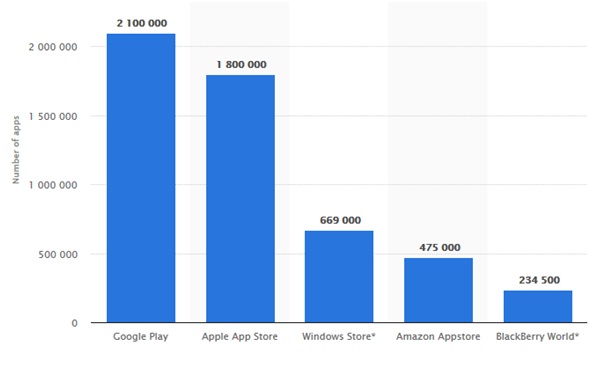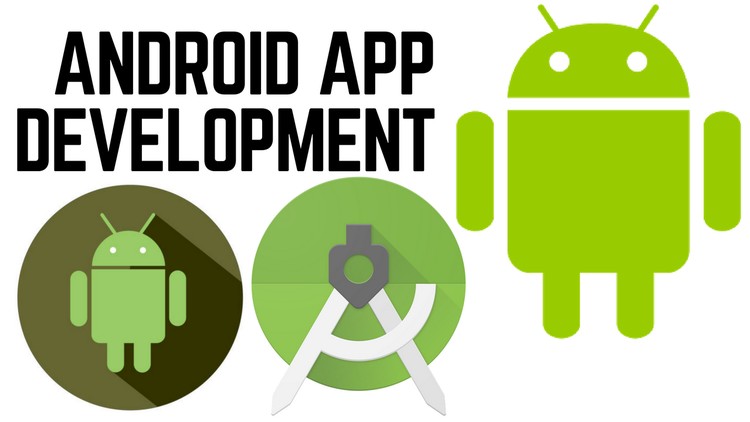You use an app and you are not paying anything (as you have downloaded it from an app store), but do you know still the app earns revenue out from your usage? Yes, mobile apps are not only the source of information but they serve as a great source of revenue generation as well.
If you wish to earn money out of your mobile app then this is the high time for you as mobile app monetization is at its peak now. Not only this, it is expected to grow very fast in the future as well.
According to App Annie research, the worldwide consumer spends in app stores is expected to $156 billion by 2022. It is expected to grow at a rate of 13.9% annually as compared to $81.7 billion in 2017. When it comes to individual spending, then on an average a customer would spend $26 per device which would be a growth of 23% as compared to 2017.
We all are much familiar with the popularity of Android apps. Statista predicts that there will be more than $2.1 million apps in the Play Store by the end of 2020, which is more than any other app store.
The rising popularity of Android apps is a good sign of business who wish to go for Android app development services. It is because this widely accepted platform can help them to generate great revenue for their business as well.
There is a misconception amongst many that as most of the Android apps are free to download then it means that they do not assure revenue. However, this is not right. Android apps have equal potential for generating revenue for your business like any other platform (and in fact more than that). Let us tell you how;
#1 Advertising:
7 out of 10 app providers use an advertising model for generating revenue for their business (a Think Mobiles data). The owner gets paid on the basis of per click on add, per impression, or when a user installs the advertised app. Further on classification, there are 6 different types of adds which are: banner ads, interstitial ads, native ads, video ads, reward video ads, and playable ads.
Native& display or banner ads are amongst the most popular ad categories used by the developers for app monetization.
– Native ads are the ones that fit within the app and appear as it’s a natural element. hence it seems less irritating to the users and there are high chances of generating revenue from such ads.
– Banner ads are of different sizes and can appear at the top or bottom of the app screen. These types of ads are small and cause less interruptions to the user so that they may enjoy the app use. App developers can use the data analysis of a user based on the behavior during app access and can provide customized ads.
#2 Subscription:
Generating revenue from the free app through subscription is a great way of monetization. You can provide restricted features and content in a free app for a time period. Further, if the user likes it then he/she can take a subscription and enjoy the services.
This type of monetization is great if you have a newspaper app or magazine. The user would take a paid subscription and you can earn money out of it.
#3 In-App Purchases:
This is definitely the best strategy for you to get money from your free app. You can provide your user with an option to redeem the special function in the app by making an in-app function.
This mode of monetization definitely works well with the apps which have broad features and have a huge target base as well. This is basically a ‘pay-what-you-want’ model, which means the user can pay for an additional feature by making an in-app purchase.
For example, in a graphical designing toolkit, you may find many features but additionally, there are few qualitative features too which can be used by making an in-app purchase.
#4 Freemium Upsells:
Freemium upsell is all about creating two versions of the app, basic and premium. The basic app can be downloaded and used for free. There are limited functionalities in the basic app. But, in case the user likes the apps and wish to proceed with the access to full functionality and premium services he can get a premium version of that upon making an in-app payment.
The best example for this is Grammarly and Grammarly Premium. Grammarly can be used for free, whereas for advanced features you need to buy Grammarly Premium. Such types of versions is called as paid sister versions.
As per the research by Think Mobiles, of 15% of apps are using paid sister version to unlock additional feature, rather than implementing the in-app purchase. This is a great strategy which you too can implement in your Android app to generate revenue.
#5 Physical Purchase and Merchandise:
Letting your uses make physical purchases of goods and merchandise from your app is also a revenue generation model. But, don’t assume that only core e-commerce companies can do that.
There are many successful examples of such apps which generated revenue from selling good and merchandise. The best example of this is Roviocompany which sells more than 1 million toys, branded t-shirts, and stickers from the Angry Bird game every month.
In a Nutshell
Whether it is luring customer through native apps (which just looks natural) or making money by in-app sales, there are many ways through which Android apps can generate great revenues. If you also wish to earn money out of your Android app (even if it is free to download) then you can use any of the ways mentioned above to achieve that.
But yes, it is necessary to discuss your monetization idea with Android app development services so that they can develop the app in a way which can provide you more options for revenue generation.







